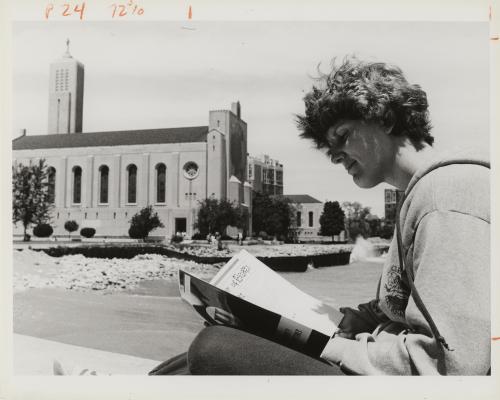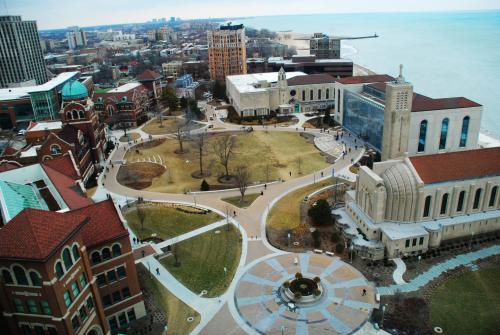Through the Years
Today, Loyola University Chicago is not simply an educational institution; it is the embodiment of all of its incarnations over the past 150 years. Although it is most widely recognized as a private, four-year university, like nearly 2,000 others in the United States, it is equally important to remember that Loyola is a Jesuit university with roots in a long tradition of inclusive education. In addition to these institutional and historic descriptors, it has long been an urban university that has both been shaped by and instrumental in shaping the city of Chicago. These characteristics make Loyola a unique source of both broad and specific stories about higher education through the years.
Because Loyola has such a layered background, it has experienced many changes over its 150-year history. Since 1870, the student body has expanded from one predominately made up of the children of European immigrants to a much more diverse population. The curriculum has also evolved to address new areas of study, advancing technology, and a rapidly changing global perspective, always balancing change with the classic Jesuit model of education, the tenets of which are intellectual competence; caring for the whole person; service to God; the preparation of men and women for others; and a commitment to pursuing justice. The university has seen great physical progress as well: there was a gradual shift in location to the Lake Shore Campus in Rogers Park from its original Twelfth Street location from 1909 until 1920 and an expansion in the subsequent decades to multiple campuses in Chicago and beyond.
In addition to the many changes within the university itself, Loyola has had to evolve with the world around it. In the decades since Loyola’s founding, Chicago weathered the Great Fire, two World Wars, the Great Depression, and the social movements of the 1960s and 1970s – all of which significantly impacted the students of Loyola as well as the university itself. Thusly, creating the need for a shift in thinking and practice that would address a changing and growing population in an increasingly globalized world. Closer to home, Loyola’s neighboring community has transformed as well. To the north and west, Rogers Park has evolved and grown with the construction of elevated train tracks and successive waves of immigration that have led to it becoming the most diverse neighborhood in Chicago. While immediately to the south, the building now known as the Mundelein Center served as the central hub of Mundelein College, the women’s Catholic university that educated young women from 1930 until it affiliated with Loyola in 1991.
One hundred and fifty years later, Loyola University Chicago endures, bearing the legacies of the events and eras it has witnessed.


